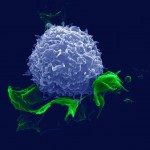Link to Pubmed [PMID] – 25492529
Acta Neuropathol Commun 2014 Dec;2:170
Recent evidence suggests that reactive oxygen species (ROS) produced by inflammatory cells drive axonal degeneration in active multiple sclerosis (MS) lesions by inducing mitochondrial dysfunction. Mitochondria are endowed with a variety of antioxidant enzymes, including peroxiredoxin-3 and thioredoxin-2, which are involved in limiting ROS-induced damage. In this study, we explored the distribution and role of the mitochondrial antioxidants peroxiredoxin-3 and thioredoxin-2 as well as their regulator peroxisome proliferator-activated receptor gamma coactivator1-alpha (PGC-1α) in MS pathogenesis. Immunohistochemical analysis of a large cohort of MS patients revealed a striking upregulation of PGC-1α and downstream mitochondrial antioxidants in active demyelinating MS lesions. Enhanced expression was predominantly observed in reactive astrocytes. To elucidate the functional role of astrocytic PGC-1α in MS pathology, we generated human primary astrocytes that genetically overexpressed PGC-1α. Upon an oxidative insult, these cells were shown to produce less ROS and were found to be more resistant to ROS-induced cell death compared to control cells. Intriguingly, also neuronal cells co-cultured with PGC-1α-overexpressing astrocytes were protected against an exogenous oxidative attack compared to neuronal cells co-cultured with control astrocytes. Finally, enhanced astrocytic PGC-1α levels markedly reduced the production and secretion of the pro-inflammatory mediators interleukin-6 and chemokine (C-C motif) ligand 2. Our findings suggest that increased astrocytic PGC-1α in active MS lesions might initially function as an endogenous protective mechanism to dampen oxidative damage and inflammation thereby reducing neurodegeneration. Activation of PGC-1α therefore represents a promising therapeutic strategy to improve mitochondrial function and repress inflammation.

